This was published 11 years ago
Gone tomorrow: the places you need to visit, right now
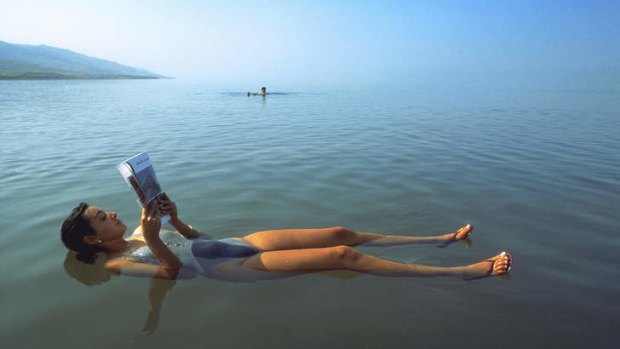
The shrinking Dead Sea.Credit: Alamy
From the Galapagos to the Great Barrier Reef, there are some destinations you can't keep putting off for a visit, writes Michael Gebicki.
Some of what's here today on the tourism landscape will be gone tomorrow. Ignoring the grim reaper of climate change lurking in the background, new dams, roads through wild places, developments both commercial and political, conflict and even the very fact of mass travel all impact on the reasons we travel, and what we see when we get there.
It's not all bad news.
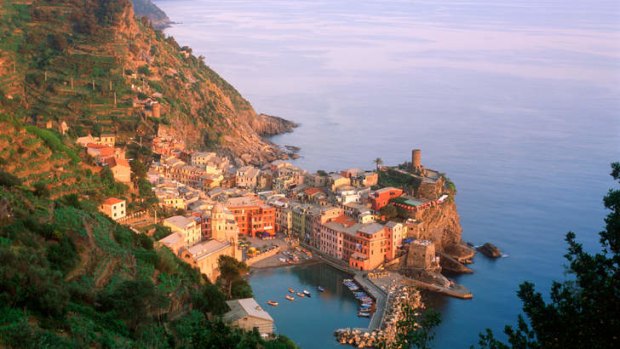
The village of Vernazza at Cinque Terre, Italy.Credit: Alamy
The MOSE project is scheduled for completion this year, offering Venice an insurance policy against the high tides that inundate the city with increasing frequency.
In Bethlehem, rotting roof timbers and the water seepage that threatened the frescoes in the Church of the Nativity are finally being repaired at the site where, according to tradition, Jesus Christ was born.
Here are 20 places that, through natural phenomena and lifestyles, may not be the same in 10 years.
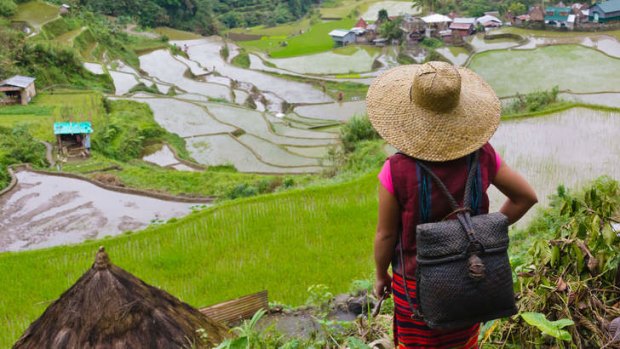
The Luzon rice terraces, Philippines.Credit: Alamy
MEKONG RIVER SYSTEM
China, Laos, Thailand, Vietnam and Cambodia
State of play China has constructed a dam on the Upper Mekong and Thailand, Laos and Cambodia have plans to build more.
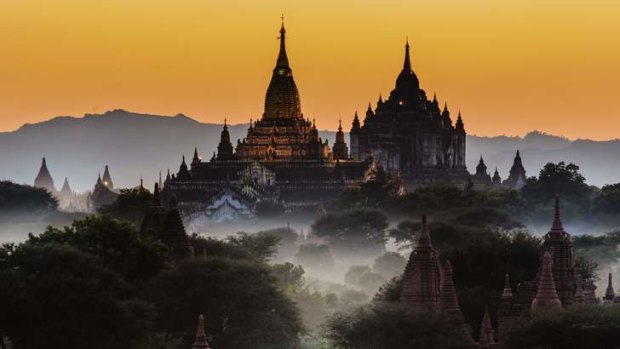
The great temples of Bagan, Myanmar.Credit: Corbis
These dams will disrupt the powerful seasonal flows that regulate the river's ecosystems, with consequences for its towns and villages. One threatened region is Cambodia's Tonle Sap, the giant lake that fills and empties with the rise and fall of the Mekong. Another is the Mekong River Delta in Vietnam, one of the country's most productive agricultural districts.
How to see it now There's been a boom in the past few years in mainstream river cruising on the Mekong by companies including the Australian-based APT.
ANNAPURNA CIRCUIT
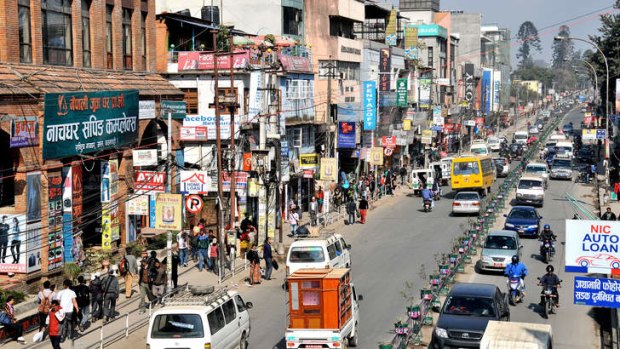
Kathmandu city traffic.Credit: Alamy
Nepal
State of play This has been a trekkers favourite for decades, a three-week loop route against a backdrop of shining white peaks, Buddhist monasteries, villages of ochre houses, foaming rivers and rhododendron forests.
Over the past few years the Nepalese government has been laying a road around the circuit and all but a fairly short section is open to motor traffic. While there are alternative routes for those up for a long but not too daunting Himalayan circuit trek, a decade ago anyone who suggested a road would have been laughed out of the tea houses along the Annapurna Circuit.

The old hutongs of Beijing.Credit: AFP
How to see it now World Expeditions offer a guided camping-based trek, or take a solo trek to Annapurna Base Camp, staying in tea houses.
YANGON STREETSCAPE
Myanmar
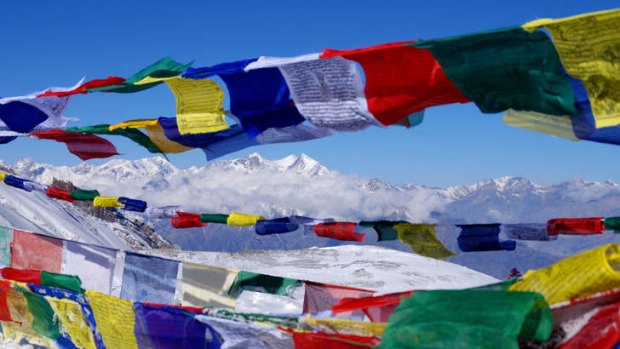
Flags on the Annapurna circuit, Nepal.Credit: Alamy
State of play The former capital's treasury of colonial-era buildings has suffered from neglect, yet the Strand Hotel is an example of what can be achieved with money.
With the recent easing of sanctions and influx of tourists, they are now a prime target for developers wanting a city with shopping malls and new hotels.
How to see it now Accommodation bookings are tight and a guided tour is practically the only way to guarantee a room. APT, Travel Indochina and Wendy Wu Tours are Australia-based operators.
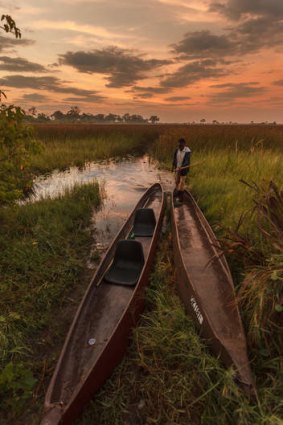
Botswana's famed Okavango Delta.Credit: Alamy
HAVANA
Cuba
State of play Rooted in the traditions of Old World Spain, Havana's baroque architecture exults in stucco, pastels, giddy ornamentation, colonnades, arches and the sinuous forms of wrought iron. When the inevitable rapprochement with the USA occurs and the doors open to the Yankee hordes, this architectural heritage will be under threat from developers.
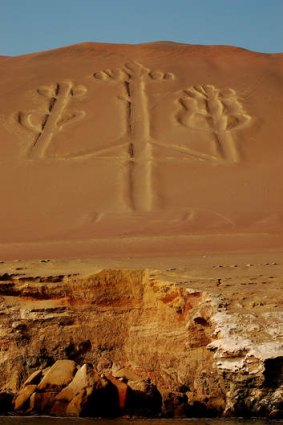
Peru's Nazca earth drawings.Credit: Getty Images
Already changes are afoot and the prospect of the city's Detroit chrome-mobile car culture being diluted with shiny new Peugeots and Toyotas is causing nostalgiacs to tremble.
How to see it now Melbourne-based Contours are South America specialists and an ideal choice for going to Cuba.
OKAVANGO DELTA
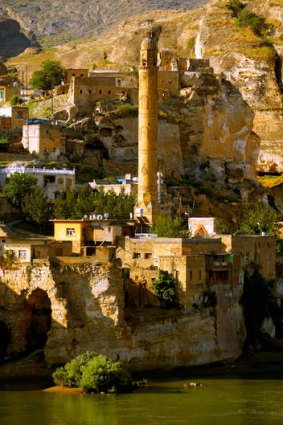
Turkey's ancient city of Hasankeyf.Credit: Alamy
Botswana
State of play The Okavango Delta is one of Africa's wildlife treasures, a mosaic of lakes, lagoons and channels surrounded by the Kalahari Desert. But it's under threat. A recent aerial survey by the Botswana Department of Wildlife and National Parks revealed alarming falls in the Okavango's populations of grazing wildebeest, lechwe, zebra, kudu and giraffe.
The species decline is as great as 90 per cent in the worst case, with drought, habitat encroachment, bushfire and poaching as the culprits.
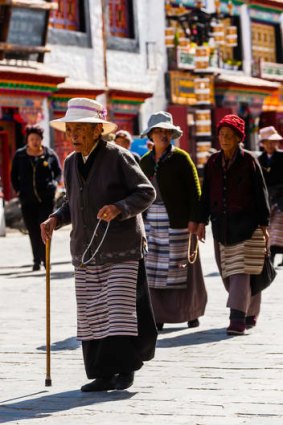
Old Lhasa, Tibet, now under Chinese rule.Credit: Alamy
How to see it now The Classic Safari Company is a Sydney-based specialist that can put together a tailored tour to the Okavango. Bench International is another Sydney-based Africa specialist with group tours.
DEAD SEA
Jordan, Israel, Palestine
State of play The Dead Sea has shrunk by more than a third in the past 40 years. Its water level has dropped 25 metres and continues to fall by more than a metre a year as Lebanon, Jordan and Israel extract irrigation water from the Jordan River.
At current rates it will disappear around 2050. A recent initiative proposes to refill the Dead Sea with supersaline water ejected from a desalination plant proposed for Aqaba in Jordan, but this involves co-operation from Israeli, Jordanian and Palestinian officials.
How to see it now Green Olive Tours and Mejdi Tours are local operators with extensive experience in the region.
HUTONGS OF BEIJING
China
State of play Hutongs are the traditional villages that exist within many Chinese cities, most notably Beijing. A knot of narrow laneways lined with traditional courtyard residences, they are an intriguing facet of the city, stretching back to the Yuan Dynasty of almost 1000 years ago.
Many hutongs have disappeared in the rush to construct expansive boulevards, offices and sporting facilities for the Beijing Olympics, however a few are protected by heritage orders.
How to see it now Great Wall Adventure offers a half-day hutong tour, which includes a guided tour of a 300-year-old courtyard home.
CINQUE TERRE
Italy
State of play The heart-stopping beauty of the Cinque Terre derives from the huddled topography of its pastel-coloured, sea girt villages, and also from its intricately terraced vineyards.
Maintaining that landscape requires diligent cultivation, but the agricultural labourers who were the foundation of the system have found more lucrative opportunities in the local tourism industry. The terraces have fallen into disrepair in many places and landslides have resulted.
In October 2011, following heavy rain, landslides almost destroyed the towns of Monterosso al Mare and Vernazza. In September 2012, four Australian walkers were injured by cascading boulders.
How to see it now Hidden Italy offers a seven-day self-guided walking tour along the Cinque Terre with pre-booked accommodation and daily luggage transfers.
GRAND ETHIOPIAN RENAISSANCE DAM
Ethiopia
State of play This dam on the Blue Nile in Ethiopia is scheduled for completion in 2017. The dam will reduce flooding downstream, however it will also restrict the water available for irrigation, deprive farmers of silt and lead to a significant change in the downstream fishery. Evaporation from the reservoir will strangle flows in the Nile itself. Egypt fears these reduced flows of fresh water will have massive impacts for the millions who live along its banks.
How to see it now Bunnik Tours has many years of expertise operating tours to Egypt and the Middle East.
MADAGASCAR
State of play Isolated from the rest of the world for more than 60 million years, Madagascar is a living laboratory of evolution. About 95 per cent of its animals are found nowhere else, including the furry, pop-eyed lemur.
The human population is expanding rapidly and relying on slash-and-burn agriculture for its survival. Poverty combined with the relatively high value of the island's hardwood forests is accelerating deforestation, and several lemur species face the imminent prospect of extinction in the wild.
How to see it now A guided tour is the only practical way to experience the island, and Adventure World, Intrepid Travel and Peregrine Adventures all offer tours.
RICE TERRACES OF LUZON
Philippines
State of play On the northern Filipino island of Luzon, the steep slopes of the Cordilleras have been hacked into terraces, climbing hundreds of metres in sinuous, snaking steps that echo the natural contours.
These are the Banaue Rice Terraces, and essential to their survival has been a complex system of forest conservation, water distribution and collective labour that has existed for 2000 years.
The employment demands of a growing tourism industry have undermined traditional farming practices. Logging in the higher rainforests that act as the catchment for the terraces has led to water loss, exacerbated by half-metre, thumb-sized earthworms that now burrow deeper into the soil in search of moisture, causing terrace walls to dry and crack, and further depleting water supplies.
How to see it now Baguio to Banaue is roughly six hours over the breathtaking Halsema Road. Banaue has several hotels, from where it is possible to arrange tours of the rice terraces.
THE GALAPAGOS ISLANDS
Ecuador
State of play The finches of the Galapagos once provided Charles Darwin with the evidence for his theory of evolution. Today, the mangrove finch is believed to number little more than 100.
The rest are roadkill, victims of the increasing human population who have arrived to service the islands' booming tourism industry.
Other species that have hitched a ride on cruise boats have displaced endemic species and poaching of rare or endangered species, the harvesting of several prized marine species and marine pollution are sabotaging the integrity of these islands that once changed the way humanity thought about its origins.
How to see it now A cruise is by far the best option, and Abercrombie & Kent, Lindblad Expeditions, World Expeditions and Adventure World all offer various cruises.
HASANKEYF
Turkey
State of play The Ilısu Dam on the Tigris River in eastern Turkey's Anatolian region is scheduled for completion at the end of 2014. When the dam's reservoir fills three years later, it will drown the ancient city of Hasankeyf, virtually an open-air museum stretching back to the early days of human civilisation.
Assyrians, Romans, the Byzantine Empire, Arabs and Mongols all left their mark on Hasankeyf, which includes a number of historic mosques, tombs and the 12th-century palace of the Turkmen Artuqid dynasty.
How to see it now Westminster Classic Tours is a British-based operator that offers a trip to Hasankeyf.
NAZCA LINES
Peru
State of play Etched into the floor of the Peru's southern desert, these ancient geoglyphs are a powerful reminder of the country's rich pre-Columbian history. Numbering more than 70 figures, they depict birds, fish, monkeys or humans, the largest of them more than 200 metres across, but they are fragile.
In recent times, roads have been built across the lines, four-wheel drives with tourists on board have cut through others and squatter camps and inappropriate tourism developments have taken a toll.
How to see it now A light aircraft flight over the terrain is the best option, since the lines only make sense from the air. Alas Peruanas is one of a number of operators from the local Maria Reiche Neuman Airport. Nazca Lines Tours offers various flight options that include transport to the site.
LHASA
Tibet
State of play Tibetan culture is under assault, and Lhasa bears the scars. Improved roads and a train line have provided conduits for Han Chinese who have flooded into Lhasa and who now control the lion's share of commercial activity in the capital.
Tibetan schoolchildren are taught in Mandarin rather than their mother tongue and the country's nomads have been forced into settlements. The police presence in the city is jarring. The monastic life that was a distinguishing feature of Tibet has been systematically undermined, and the character of Lhasa is changing fast.
How to see it now Lhasa is usually included in a more comprehensive tour of Tibet, and World Expeditions, Adventure World and Helen Wong Tours all among the leading operators.
MACHU PICCHU
Peru
State of play The misty, mountain stronghold of the Incas struggles to cope with the 2500 visitors that is the maximum allowed each day. Pathways have been eroded, the buses that labour upward from Aguas Calientes spew polluting fumes and landslides pose an ominous threat to the citadel.
In 2012, UNESCO called on authorities to take urgent measures, yet the country's heavy reliance on tourism revenue from Machu Picchu makes it reluctant to impose further controls on visitor numbers.
How to see it now Machu Picchu is usually part of a more comprehensive tour of Peru, with Intrepid Travel, Peregrine Adventures and World Expeditions as some of the main Australia-based operators.
BAGAN
Myanmar
State of play More than 13,000 religious structures were built between the 11th and 13th centuries on the dusty plains alongside the Irrawaddy River and in the intervening years many suffered damage from earthquakes and neglect.
In an ongoing process, government contractors have performed hasty and clumsy restoration work that creates eyesores instead of authenticity.
How to see it now Adventure World, World Expeditions, Intrepid Travel and Peregrine Adventures all include Bagan as part of their wider tours of Myanmar.
KATHMANDU
Nepal
State of play The Nepalese capital was once a place of beguiling charm, a quirky mediaeval city where every facade sported carved window surrounds as delicate as lace.
During the past two decades the city's population has exploded and traffic has boomed. Its temples are now islands surrounded by a hotch-potch of concrete horrors and noxious fumes from traffic that barely crawls. Since nothing is being done about the problem, Kathmandu's cultural fabric will continue to fray.
How to see it now Kathmandu is the entry point for Nepal's Himalayan adventures, and a standard stopover for various adventure tour operators including Abercrombie & Kent, Adventure World and World Expeditions.
NOMADS
Mongolia
State of play The nomads who graze their animals on the Mongolian steppe are some of the last of their kind but their lifestyle is changing fast, beset by Mongolia's rapidly evolving economic landscape, climate change and desertification.
Already thousands of herders have moved to towns, lured by the prospect of jobs in the booming mining and construction industries and the yurt camps of Ulaanbaatar now house a permanent population of displaced nomads. Along with their lifestyle, some of the rich cultural traditions formed during centuries of nomadic life will also disappear.
How to see it now Nomads Tours, Intrepid Travel and World Expeditions all operate tours that venture out onto the grasslands of Mongolia.
TSUKIJI FISH MARKET
Japan
State of play The world's largest fish market, this sprawling facility in Tokyo's Chuo Ward frequently makes the headlines for the astonishing prices paid for prime tuna at its daily auctions.
The market, the size of 43 football fields, is scheduled for relocation to a modern, climate-controlled distribution centre in 2014 that will have none of Tsukiji's personality.
However, contamination at the new site has given Tsukiji a reprieve for the time being, allowing visitors to experience a distinctive aspect of Japanese culture.
How to see it now Tsukiji Fish Market Guided Tours are the local experts.
TOURISM'S FIVE CLIMATE-CHANGE CASUALTIES
ARCTIC
According to the most pessimistic scientific predictions, the northern polar region will be ice-free in summer in less than a decade. It will then become relatively easy for anyone to stand at the North Pole, although it will be on the deck of a ship, with the only ice the ice in your cocktail glass.
MALDIVES
The Maldives is one of the nations most at risk from climate change, with the rising sea level imperilling the low-lying resorts for which the nation is famous.
ALPS
More than half the ice-covered area of Europe's Alps has disappeared in the past 150 years, and more than 70 per cent of the region's glaciers is predicted to be meltwater by the middle of the century.
BARRIER REEF
Already degraded by agricultural runoff, river sediments and dredging, the Great Barrier Reef, the world's largest reef system and the first region of Australia to be included on the World Heritage List, faces an even greater threat from rising sea temperatures.
HIMALAYAS
The Himalayas are among the regions most vulnerable to climate change, with melting glaciers, changing rainfall patterns and increasing temperatures affecting the ecology and the billion people whose lives are interwoven with rivers spawned from these mountains.
Sign up for the Traveller Deals newsletter
Get exclusive travel deals delivered straight to your inbox. Sign up now.